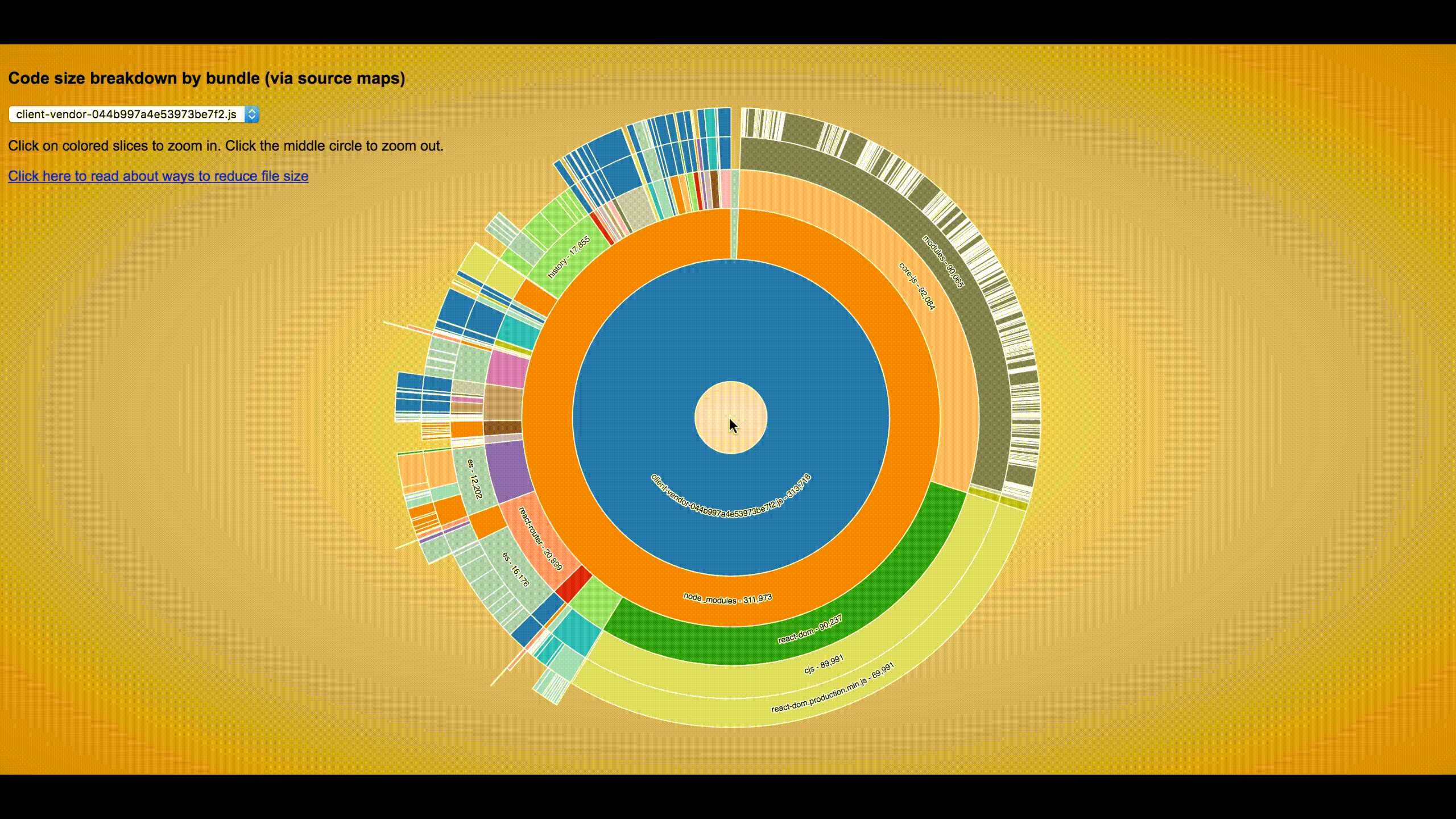bundle-analyzer v0.0.6
Bundle analyzer
Displays a visualization of code sizes by file based on source map information.

File sizes displayed by this tool reflect size of transpiled minified bundled code, as calculated from source maps. Note that this tool does not take compression (i.e. gzip/brotli) into account. Compression profiles vary depending on the compression algorithm and aggressiveness setting, thus cannot be easily calculated with accuracy. For the purposes of optimization work, making an assumption that compression is applied evenly across the bundle is usually good enough.
Installation
# NPM
npm install bundle-analyzer -g
# Yarn
yarn add bundle-analyzer --globalUsage
CLI
bundle-analyzer dist-directorydist-directory- Required. A directory path that contains minified Javascript files and their source maps. It's expected that source map files have the same name as their respective js files, plus a.mapextension.
API
import analyzer from 'bundle-analyzer';analyzer.start
const server = analyzer.start({dir: string, port: number})dir: string- Required. A directory path that contains minified Javascript files and their source maps. It's expected that source map files have the same name as their respective js files, plus a.mapextension.port: number- Optional. Defaults to9000. The port at which the analyzer server runs- returns
server: {update : () => void, close: () => void}server.update()- Hot-reloads the visualizationserver.close()- Shuts down the analyzer server
analyzer.getSizes
const sizes = await analyzer.getSizes(dir)dir: string- Required. A directory path that contains minified Javascript files and their source maps. It's expected that source map files have the same name as their respective js files, plus a.mapextension.- returns
sizes: Node {name: string, children: ?[Node], size: ?number}name: string- a directory or file namechildren: [Node]- a list of subdirectories or filessize: number- a size calculation based on source maps. It represents the sum of sizes of all the code originating from a single file, after transpilation, minification and bundling.
Ways to decrease file size
Bundle splitting
Typically, the simplest way to reduce the amount of code being downloaded on page load is to employ code splitting
Reduce dependencies
For example, prefer native Array methods over utility libraries such as Lodash and Ramda, and prefer tree-shaking friendly libraries over monolythic ones (e.g. date-fns vs moment.js)
Alias libraries
For example, React can often be replaced by similar libraries such as Nerv.js or Preact.
Remove polyfills
Ensure you're not polyfilling/mocking node globals
Differences from webpack-bundle-analyzer
Bundle analyzer CLI hot-reloads, and its programmatic API is designed to integrate with server push events.
Bundle analyzer uses a D3-based zoomable sunburst visualization, which provides a more accurate visual representation of size breakdowns. In addition, bundle analyzer aggregates the analysis of all bundles into a single interface, and it hot-reloads them when it detects changes in disk.
Bundle analyzer looks at source maps rather than webpack's stats.json file, so it should work with other non-Webpack tools such as Rollup or Parcel.
Bundle analyzer does not report compression estimates, since different compression algorithms and different settings give different results and the results of gzipping each section individually doesn't provide an accurate number anyways.
Differences from source-map-explorer
Both bundle analyzer and source map explorer display roughly the same information, but slightly differently. Bundle analyzer uses a D3-based zoomable sunburst visualization, which provides a more accurate visual representation of size breakdowns. In addition, bundle analyzer aggregates the analysis of all bundles into a single interface, and it hot-reloads them when it detects changes in disk.
License: MIT